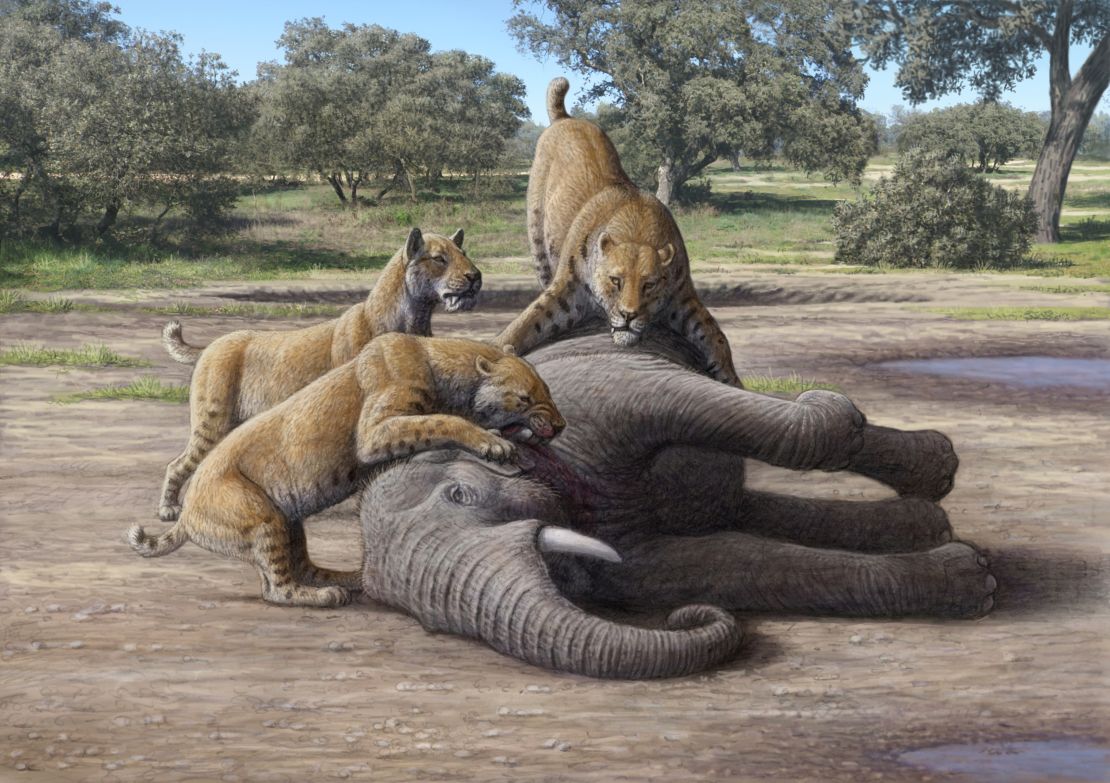The comedy film “Ice Age” humorously depicted a saber-toothed cat and a mammoth as misfit friends, but in prehistoric times the feline carnivore was a formidable predator that preyed on the young of the large mammal.
The scimitar-toothed cat, or Homotherium serum, hunted 2-year-old mammoths, new research published mid-April in the journal Current Biology has revealed.
The team of geologists and paleontologists estimated what the extinct animal ate by examining the chemical makeup of its teeth. If certain types of carbon from plants existed in both Homotherium and mammoths, it’s likely the herbivore was a tasty meal for the carnivore, according to the researchers.
“Essentially you are what you eat,” study coauthor and paleontologist Larisa DeSantis, an associate professor at Vanderbilt University in Nashville, Tennessee, told CNN. “In the case of carnivores, we can tell if they were eating things that ate Carbon-4 (warm season) grasses or were they eating things that ate Carbon-3 (cool season) shrubs.”

It is thought the cat brought its prey back to its cave to eat it. The research team studied fossils found at Friesenhahn Cave outside of San Antonio. The specimens included several baby mammoths alongside the cats.
Scientists and researchers believe the site has provided the second most varied vertebrae fossils in the United States from the Pleistocene epoch, a time period better known as the last ice age, according to Concordia University in Austin, Texas.
The team also used morphology, the study of the size and shape of the bones. At its simplest level, morphology would suggest that humans having canines and molars indicates they are naturally omnivores.
“Morphology is usually your first approximation of diet,” DeSantis said. “You are a product of your evolutionary history, so you can only change things so much over time. What morphology gives you is the potential diet of an animal.”

Microscopic wear patterns on the teeth were also studied by the team. In modern animals, this analysis would suggest cheetahs avoid bone and eat softer flesh, while hyenas will break through bone and digest it.
In this case, wear patterns on the Homotherium’s teeth revealed the tough texture of some of the meat it ate, “the toughest foods of any living cat we’ve looked at so far,” consistent with the flesh of juvenile mammoths, DeSantis said.
The scimitar-toothed cat’s dental detail is flatter and shorter than the iconic Smilodon fatalis, a different saber-toothed cat species that had long canines, like the character Diego in “Ice Age.” Homotherium once lived on every continent except for Australia and Antartica, according to Vanderbilt University.
The meat-eater likely ate bison and horses, too, DeSantis said, but not larger mammoths.
It’s not known how the cats became extinct. DeSantis now studies the behavior of coyotes and cougars, which lived at the same time as the Homotherium, to find out why. Scientists believe a combination of climate change and the dominance of humans is the most likely cause of extinction, she added.





























































































